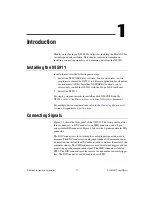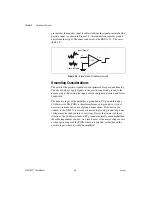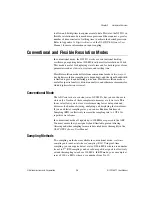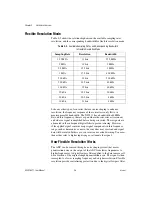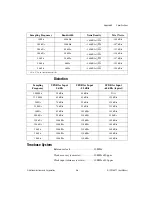
Chapter 2
Hardware Overview
2-8
ni.com
•
The linearity of the ADC is calibrated using an internal sine wave
generator as reference.
•
The time-to-digital converter used for RIS measurements is calibrated.
Caution
Do
not
apply high-amplitude or high-frequency signals to the NI 5911 during
self-calibration. For optimal calibration performance, disconnect the input signal from the
NI 5911.
Why Warnings Occur During Acquisition
The NI 5911 uses a heater circuit to maintain constant temperature on the
critical circuitry used in flexible resolution mode. If this circuit cannot
maintain the temperature within specification, a warning is generated. This
warning indicates that the temperature of the ADC is out of range and
should be recalibrated with a self-calibration. During acquisition in flexible
resolution mode, a warning is generated if the input to the ADC goes out of
range for the converter. The fact that this condition has occurred may not
be obvious from inspecting the data because of the digital filtering that
takes place on the acquired data. Therefore, a warning occurs to notify you
that the data includes some samples that were out of the range of the
converter and may be inaccurate.
External Calibration
External calibration calibrates the internal reference on the NI 5911.
The NI 5911 is already calibrated when it is shipped from the factory.
Periodically, the NI 5911 needs external calibration to remain within
the specified accuracy. For more information on calibration, contact NI, or
visit
ni.com/calibration
. For actual intervals and accuracy, refer to
the
section of Appendix A,
Triggering and Arming
There are several triggering methods for the NI 5911. The trigger can be an
analog level that is compared to the input or any of several digital inputs.
You also can call a software function to trigger the digitizer. Figure 2-3
shows the different trigger sources. When you use a digital signal, that
signal must be at a high TTL level for at least 40 ns before any triggers are
accepted.
Note
The NI 5911 does
not
support delayed triggering.




